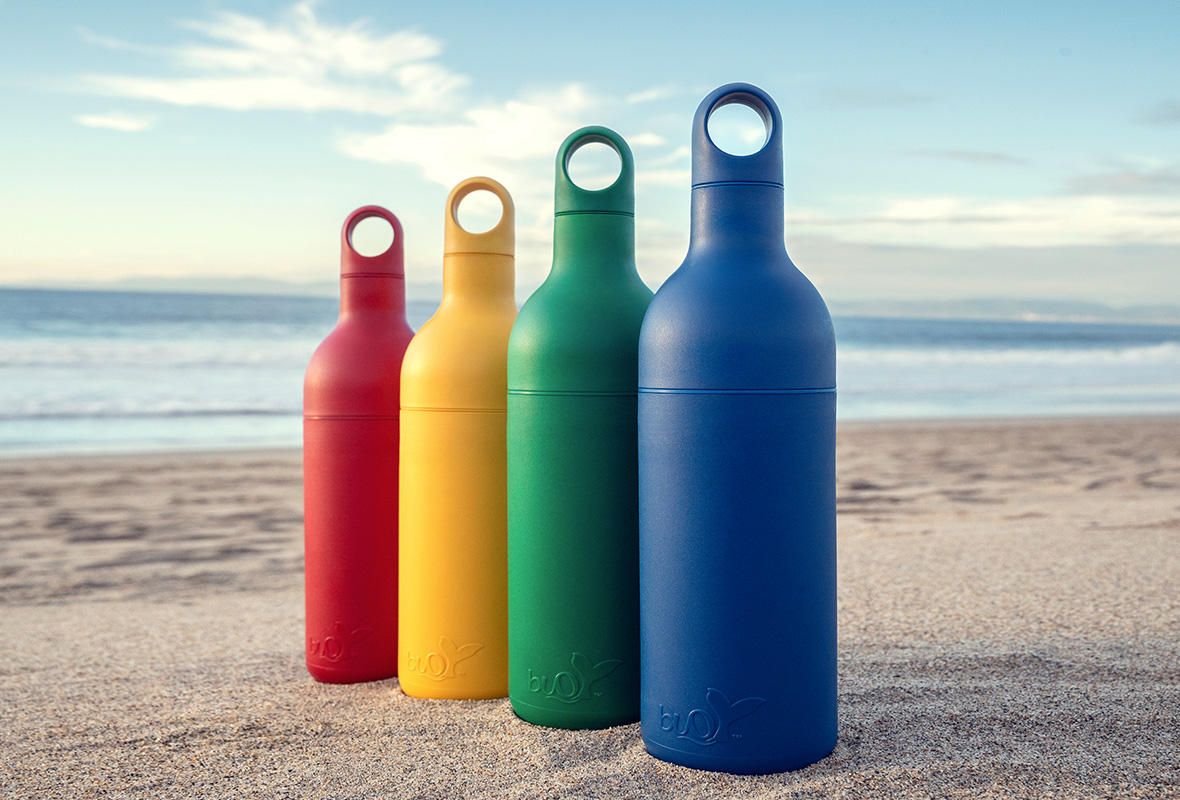Part of our mission at Buoy is to educate the public about the science and ecological impact of plastics, with the goal of giving people a way to navigate the good and the bad of plastics in their daily lives. In the course of answering people’s questions about why we’ve chosen to make our products out of recycled Ocean-bound HDPE, I’ve dug back to my polymers class at university and constructed a ground-up presentation of where polymers come from, what makes people say that polymers are toxic or endocrine disrupting and how you can make intelligent decisions about the use of plastics and other materials in your life.
I’m Adrian Colesberry. Educated as a Biomedical Engineer, I’ve spent most of my career in the biotech and pharmaceutical industry and now I’m proud to be the Chief Operating Officer of Buoy. We have several related purposes at Buoy: We make products out of 100% recycled plastic to consume plastic that would otherwise become waste. We set up circular economies using our recycled food containers to reduce the waste caused by single use containers. We also take seriously our mission to educate people about ocean waste and plastic. Unless your head is under a rock, you’ve heard that plastic is harmful, even toxic, and that recycling is useless. We get questions all the time from concerned consumers about why we would make a bottle out of endocrine disrupting plastic. We explain that the plastic we use (HDPE) doesn’t have endocrine disrupting molecular structures and is one of the most food-safe materials out there. But I don’t want to lean on authority to convince you of that. I want to show you why plastics can be endocrine disrupting and why other plastics are safe. I also want you to understand why recycling can still be an important part of the solution, even though it has not been significant thus far.
I’m going to roll out this series on my personal LinkedIn at the same time as I roll it out on the Buoy LinkedIn. As we found out the hard way during the pandemic, it is hard to communicate science to people. I will do my humble best. I have been fortunate in my career to have been surrounded by brilliant scientific minds and critical thinkers. To these current and former colleagues, and to all readers, please message or comment with corrections or any suggested improvements. Thanks for reading.
Let’s start at a comically way-back beginning.
How Does Life Work? And Why Did Oil Happen?
Plants work by taking water and carbon dioxide then using sun-power to form them into carbohydrates. The word carbohydrate contains that meaning. It’s a carbon that’s been hydrated, so carbohydrate.

The carbohydrate above is glucose and notice that the plant gives off oxygen in that reaction, which is something we all know about plants. (I should mention that all the molecular drawings are courtesy of molview.organd the polymer drawings are courtesy of Wikipedia. Though I’ve drawn most of this talk from my Polymer class back in college at the University of Texas, from Dr. Paul, I did use Wikipedia to remind me of things and to teach me a few things in the process. I’ve made a donation to Wikipedia for its continued usefulness.)
Animals reverse this process by taking carbohydrates and using enzymes and molecular mechanisms to dismantle the carbohydrate in the presence of oxygen. These processes release energy, which is stored in specific energy-carrying molecules that go off and run all our body processes, and it also releases carbon dioxide. This is the Krebs cycle or Citric Acid cycle.

Plants also use the citric acid cycle to run their cellular processes, because, of course, they are not making all those yummy carbohydrates for animals alone but also for their own growth and reproduction. In any case, plants make a bunch of molecules that look like this:

Then many millions of years ago, a lot of carbohydrates from huge fern forests and cycads and other plants that lived when the dinosaurs lived got trapped underground and turned into oil. The formula for making oil is something like Carbohydrates plus energy (around 300°F) plus time (around a million years) equals petroleum.

The one thing to note about the oil as opposed to the starting cellulose is that the high-heat process has stripped it of almost all the oxygens. This is important, because without the OH groups, the citric acid cycle can’t break it down. You could not, as you obviously know, eat oil and get any nutrition out of it. Our systems can’t break that long carbon chain and this is one reason why the plastics made from the petroleum are themselves not biodegradable. The body just doesn’t have a key for that lock and neither do any of the animals that live in our oceans and rivers, where so much of our plastic waste ends up.

Next time, we get into what polymers are in an installment I have imaginatively titled “What are Polymers?” Thanks for reading.
© Buoy, 2023

